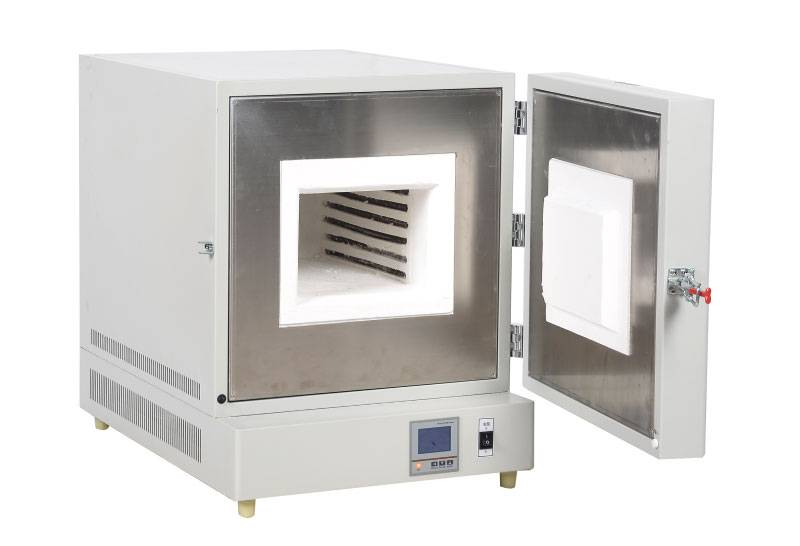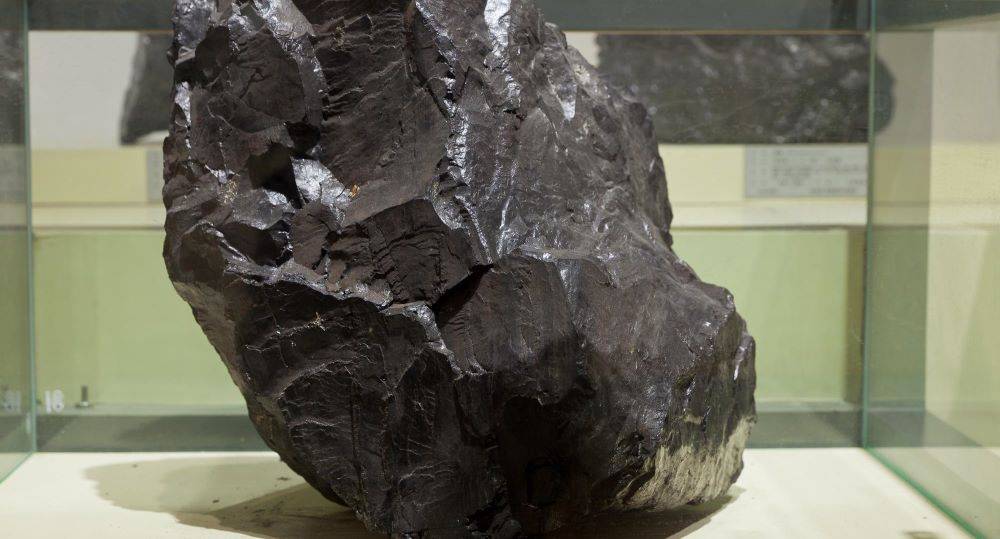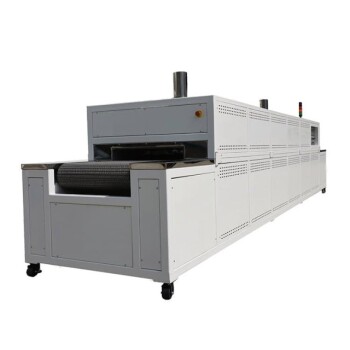머플 퍼니스의 원리와 구조
머플 퍼니스의 종류
실험실의 머플로는 다양한 형태로 제공되며, 각각 고유한 가열 원리와 용도에 따라 구분됩니다. 가장 일반적인 유형으로는 전기, 전자레인지, 가스 머플 퍼니스가 있으며, 각 유형은 과학계의 특정 요구 사항을 충족합니다.
전기 머플로는 성형, 용융, 건조, 재료 가열과 같은 다양한 작업에서 활용도가 높아 높은 평가를 받고 있습니다. 전자기장에 의존하여 재료를 가열하는 유도로와 달리 전기 머플로는 단단한 금속 용기 안에 전기로 가열된 내화 요소를 사용합니다. 이러한 설계 덕분에 더 높은 온도와 더 높은 전력 밀도로 작동할 수 있어 더 까다로운 애플리케이션에 적합합니다.
박스형 고온로는 머플 퍼니스의 고전적인 변형으로, 상자 모양을 닮은 경우가 많습니다. 이 퍼니스는 향상된 단열성과 맞춤형 치수를 제공하며, 일반적으로 전면 개방형 도어가 있는 정사각형 디자인이 특징입니다. 도어 디자인에는 보온성을 높이기 위해 내부 도어가 포함되어 있는 경우가 많기 때문에 많은 실험실에서 박스형 퍼니스가 널리 사용되고 있습니다.
써모린 머플 퍼니스는 또 다른 특수 유형으로, 특히 산업용 벤치탑 애플리케이션으로 잘 알려져 있습니다. 이 퍼니스는 최대 1200°C의 온도까지 도달할 수 있어 산업 환경의 고온 공정에 이상적입니다.
이러한 다양한 유형의 머플 퍼니스를 이해함으로써 연구소와 실험실은 특정 요구 사항을 충족하는 가장 적합한 장비를 선택할 수 있습니다.

가열 메커니즘
머플로는 다양한 가열 메커니즘을 활용하여 전기 에너지를 열 에너지로 변환합니다. 가장 일반적인 유형으로는 전열 및 마이크로파 머플 퍼니스가 있으며, 각기 다른 방식으로 열을 발생시킵니다.
전열 머플 퍼니스
전열 머플 퍼니스는 다음을 통해 열을 생성합니다. 줄 가열 전류가 도체를 통과하면서 저항으로 인해 도체가 가열되는 과정을 통해 열을 발생시킵니다. 이 방법은 매우 효율적이며 정밀한 온도 제어를 위해 실험실 환경에서 널리 사용됩니다. 일반적으로 니크롬이나 칸탈과 같은 소재로 만들어진 발열체는 고온을 견딜 수 있도록 설계되어 일관되고 안정적인 열 발생을 보장합니다.
마이크로파 머플 퍼니스
이와 달리 마이크로파 머플 퍼니스는 마이크로파 를 사용하여 전기 에너지를 열 에너지로 변환합니다. 이 과정에는 마이크로파가 퍼니스 내부의 재료와 상호 작용하여 분자 교반을 일으켜 빠르고 균일한 가열을 유도하는 과정이 포함됩니다. 이 방법의 장점은 재료를 빠르고 균일하게 가열할 수 있다는 점으로, 특히 빠른 열처리가 필요한 애플리케이션에 적합합니다.
두 가열 메커니즘 모두 고유한 이점을 제공하며 다양한 산업 및 연구 요구 사항을 충족합니다. 특정 용도에 가장 적합한 머플로를 선택하려면 이러한 원리를 이해하는 것이 중요합니다.
주요 구성 요소
머플 퍼니스의 주요 구성 요소는 기능과 효율성에 필수적인 요소입니다. 이러한 구성 요소는 다음과 같습니다:
-
발열체: 발열체: 퍼니스 내에서 필요한 열을 발생시키는 데 중요한 역할을 합니다. 실리콘 카바이드 또는 금속 합금과 같은 다양한 재료로 만들 수 있으며, 각각 내구성 및 내열성과 같은 고유한 특성을 제공합니다.
-
단열재: 고품질 단열재는 내부 온도를 유지하고 열 손실을 방지하는 데 필수적입니다. 일반적인 재료로는 세라믹 섬유와 내화 벽돌이 있으며, 단열성과 구조적 지지력이 뛰어납니다.
-
퍼니스 챔버: 실제 가열 과정이 이루어지는 핵심 영역입니다. 챔버는 일반적으로 극한의 조건을 견디고 균일한 가열을 보장하기 위해 고온 합금 또는 세라믹으로 만들어집니다.
-
온도 제어 시스템: 정밀한 온도 조절을 위해서는 첨단 제어 시스템이 필수적입니다. 이러한 시스템에는 종종 디지털 컨트롤러, 열전대, PID(비례-적분-미분) 컨트롤러가 포함되어 일정한 온도를 유지하고 가열 공정을 자동화합니다.
이러한 각 구성 요소는 머플 퍼니스가 효과적이고 효율적으로 작동하여 다양한 산업 및 실험실 애플리케이션을 충족하는 데 있어 각기 다른 역할을 합니다.
머플 퍼니스의 연구 개발
역사적 발전
머플 퍼니스의 진화는 특히 제2차 세계대전 이후 중요한 이정표가 되었습니다. 이 기간 동안 기술 발전은 온도 제어와 자동화에 특히 중점을 두고 업계에 혁명을 일으켰습니다. 이러한 혁신은 급성장하는 산업 및 과학 분야에 필수적인 보다 정밀하고 효율적인 가열 공정에 대한 필요성에 의해 주도되었습니다.
주요 혁신 중 하나는 첨단 온도 제어 시스템의 개발이었습니다. 이러한 시스템을 통해 가열 온도를 보다 정확하게 조절할 수 있었으며, 이는 다양한 애플리케이션에서 일관된 결과를 보장하는 데 필수적이었습니다. 또한 자동화 기술의 통합으로 수동 개입의 필요성이 줄어들어 효율성이 향상되고 인적 오류의 위험이 감소했습니다.
또한 전후에는 머플로의 구조 설계와 에너지 효율을 개선하기 위한 연구 개발 노력이 급증했습니다. 그 결과 다양한 산업 및 과학 용도에 적용할 수 있는 더욱 견고하고 다재다능한 용광로가 탄생했습니다. 이러한 분야의 발전은 머플로의 성능을 향상시켰을 뿐만 아니라 다양한 분야에 걸쳐 머플로의 적용 범위를 넓혔습니다.
요약하자면, 제2차 세계대전 이후는 머플 퍼니스 개발의 중추적인 시기로, 가열 및 가공 기술의 현대적 지형을 형성한 중요한 기술 혁신이 이루어진 시기였습니다.
국내 및 해외 연구
중국과 해외의 연구는 머플 퍼니스 기술의 발전에 크게 기여했습니다. 이러한 노력은 주로 구조 설계, 온도 균일성, 에너지 효율이라는 세 가지 핵심 영역에 집중되었습니다.
다음과 같은 측면에서 구조 설계 국제적인 연구를 통해 머플 퍼니스의 내구성과 성능을 향상시키는 혁신적인 소재와 디자인이 도입되었습니다. 예를 들어, 고온에 강한 세라믹과 고급 단열재를 사용하여 머플 퍼니스의 전반적인 구조적 무결성과 수명을 개선했습니다.
온도 균일성 은 특히 전체 용광로 챔버에서 일관된 가열을 보장하는 또 다른 연구의 초점이었습니다. 연구를 통해 정교한 온도 제어 시스템과 열을 더 고르게 분배하는 개선된 발열체가 개발되었습니다. 이는 분석 화학 및 재료 합성과 같이 정밀한 온도 조절이 필요한 응용 분야에 매우 중요합니다.
에너지 효율 도 크게 개선되었습니다. 연구자들은 보다 효율적인 가열 메커니즘을 개발하고 용광로 구성 요소의 단열을 최적화했습니다. 예를 들어, 재생 열교환기와 같은 에너지 절약 기술을 통합하여 에너지 소비를 크게 줄였습니다. 이러한 발전은 운영 비용을 낮출 뿐만 아니라 에너지 낭비를 최소화하여 환경 지속 가능성에도 기여합니다.
전반적으로 국내외 연구자들의 협력적인 노력은 다양한 산업 및 과학 응용 분야를 충족하는 더욱 발전되고 안정적이며 효율적인 머플로를 위한 길을 열었습니다.
주목할 만한 기업
머플 퍼니스 시장은 몇몇 주요 업체가 주도하고 있으며, 각 업체는 업계 내 기술 발전과 품질 표준에 크게 기여하고 있습니다. 카볼라이트 게로 (영국)는 다양한 실험실 환경에서 정밀도와 신뢰성으로 유명한 고성능 머플 퍼니스로 두각을 나타내고 있습니다. 마찬가지로 Nabertherm (독일)은 산업 및 연구 분야 모두에 적합한 다양한 머플 퍼니스를 제공하며 선두 업체로 자리매김했습니다.
아시아 시장에서, 정저우 코엔텍 인스트루먼트 주식회사(중국) (중국)는 특히 비용 효율적이면서도 고품질의 머플 퍼니스 솔루션을 개발하는 데 있어 상당한 진전을 이루었습니다. 이 회사들은 최첨단 장비를 생산할 뿐만 아니라 연구 개발에도 많은 투자를 통해 기술 혁신의 최전선에서 제품을 개발하고 있습니다.
| 회사 이름 | 국가 | 주요 공헌 |
|---|---|---|
| 카볼라이트 게로 | 영국 | 고성능, 정밀 머플 퍼니스 |
| Nabertherm | 독일 | 다양한 응용 분야를 위한 광범위한 머플 퍼니스 |
| 정저우 코엔텍 인스트루먼트 | 중국 | 비용 효율적인 고품질 머플 퍼니스 솔루션 |
이 주목할 만한 기업들은 효율성, 내구성 및 사용자 편의성 개선을 주도하며 머플 퍼니스 기술의 미래를 계속해서 만들어 나가고 있습니다.

머플 퍼니스의 응용 분야
산업 용도
머플로는 다양한 산업 분야, 특히 열처리, 공작물 처리 및 재료 합성 분야에서 중요한 역할을 합니다. 이러한 퍼니스는 시멘트 및 건축 자재와 같은 산업에서 없어서는 안 될 필수 요소로, 원자재와 완제품의 고온 처리를 용이하게 합니다.
시멘트 산업에서 머플로는 원료 탄산칼슘을 시멘트 생산의 핵심 성분인 석회로 변환하는 공정인 원료 소성에 사용됩니다. 이 열처리 단계는 최종 시멘트 제품의 품질과 일관성을 보장하는 데 필수적입니다. 마찬가지로 건축 자재 부문에서는 세라믹, 벽돌 및 기타 건축 자재의 열처리에 이 퍼니스가 사용되어 내구성과 구조적 무결성을 향상시킵니다.
또한 머플로는 정밀한 온도 제어와 균일한 가열이 필요한 세라믹 및 복합재와 같은 첨단 소재의 합성에 필수적입니다. 이러한 용광로는 고온을 유지하면서 가열 공정을 환경으로부터 격리할 수 있기 때문에 이러한 용도에 이상적이며, 재료가 오염 없이 필요한 화학적 및 물리적 변화를 겪을 수 있도록 합니다.
요약하면, 머플로는 시멘트 및 건축 자재의 산업 공정에 필수적인 요소로서 열처리 및 재료 합성의 품질과 효율성에 크게 기여합니다.
의료 및 분석 화학
머플로는 의료 및 분석 화학 분야에서 중추적인 역할을 수행하며 다양한 중요 응용 분야에 사용됩니다. 이 퍼니스는 의약품 검사 공정에서 없어서는 안 될 필수 요소로, 의약품 샘플의 순도와 효능을 보장하기 위해 정밀한 가열 및 처리를 용이하게 합니다. 또한 머플로는 후속 분석 절차를 위해 시료를 준비하는 중요한 단계인 시료 전처리에도 활용되어 결과의 정확성과 신뢰성을 향상시킵니다.
환경 분석에서 머플로는 물과 공기 샘플을 분석하는 데 사용되어 오염 물질과 오염 물질의 검출을 돕습니다. 이 애플리케이션은 환경 보건을 유지하고 규제 표준을 준수하는 데 필수적입니다. 또한 석유 및 자동차 등의 산업에서 매우 중요한 오일의 구성과 특성을 파악하는 오일 품질 분석에 필수적인 용광로입니다.
머플로의 다용도성과 정밀성은 이러한 분석 및 의료 화학 응용 분야에서 매우 중요한 도구가 되어 해당 분야의 발전에 크게 기여하고 있습니다.
석탄 분석
석탄 분석은 다양한 산업 분야에서 석탄의 품질과 적합성을 평가하는 데 있어 매우 중요한 과정입니다. 이 분석은 주로 수분, 회분, 휘발성 물질, 원소 구성과 같은 주요 파라미터를 결정하는 데 중점을 둡니다. 이러한 각 매개변수는 다양한 조건에서 석탄의 거동과 산업 공정에서의 전반적인 유용성에 대한 귀중한 인사이트를 제공합니다.
-
수분 함량: 석탄에 존재하는 수분을 측정한 값으로, 발열량과 취급 특성에 큰 영향을 미칠 수 있습니다. 수분 함량이 높으면 연소 및 운송의 비효율이 발생할 수 있습니다.
-
회분 함량: 회분은 석탄 연소 후 남은 불연성 잔여물입니다. 회분 함량이 높으면 석탄의 열효율이 떨어지고 회분 처리 비용이 증가할 수 있습니다.
-
휘발성 물질: 석탄을 가열하는 동안 방출되는 가연성 가스를 말합니다. 휘발성 물질 함량은 석탄의 점화 및 연소 특성에 영향을 미쳐 연소 효율과 환경 배출에 영향을 미칩니다.
-
원소 분석: 석탄에 포함된 탄소, 수소, 질소, 황, 산소 등의 원소 농도를 측정합니다. 이러한 원소는 석탄의 화학 성분과 환경에 미치는 영향을 이해하는 데 중요한 역할을 합니다.

석탄 분석에서 머플로는 정밀한 온도 제어와 균일한 가열 기능으로 인해 가장 중요한 역할을 합니다. 이러한 퍼니스는 정확하고 재현 가능한 결과를 제공하며, 이는 석탄을 주 에너지원으로 사용하는 산업에 필수적입니다.
미래 전망
커스터마이징과 혁신
머플 퍼니스 기술의 미래는 다음과 같은 방향으로 크게 변화할 것입니다. 개인화되고 지능적이며 에너지 효율적인 솔루션으로 . 이러한 발전은 단순히 점진적인 발전이 아니라 다양한 산업 분야에서 머플 퍼니스의 설계 및 활용 방식에 대한 패러다임의 변화를 의미합니다.
개인 맞춤형 솔루션
개인화는 다양한 분야의 고유한 요구사항에 맞춰 머플로를 맞춤화할 수 있는 핵심 동력이 될 것입니다. 예를 들어, 의료 분야에서는 약물 검사 및 샘플 전처리에 필수적인 정밀한 온도 제어와 오염 최소화를 위해 퍼니스가 최적화될 수 있습니다. 반면 산업 분야에서는 높은 처리량과 극한의 조건을 처리할 수 있는 견고한 설계가 필요할 수 있습니다.
지능형 자동화
머플 퍼니스의 지능화는 첨단 자동화 및 AI 기술을 활용하는 또 다른 중요한 트렌드가 될 것입니다. 이러한 지능형 시스템은 예측 유지보수, 실시간 모니터링, 적응형 제어 메커니즘과 같은 기능을 제공할 것입니다. 예를 들어, AI 기반 머플로는 처리되는 재료에 따라 가열 프로파일을 자율적으로 조정하여 최적의 결과를 보장하고 에너지 낭비를 최소화할 수 있습니다.
에너지 효율성
에너지 효율성은 특히 환경 문제와 규제 압력이 증가하는 상황에서 여전히 중요한 초점입니다. 미래의 머플로는 최첨단 단열재와 발열체를 통합하여 성능 저하 없이 에너지 소비를 줄일 것입니다. 열 관리 및 폐열 회수 시스템의 혁신은 친환경성을 더욱 강화할 것입니다.
요약하자면, 머플 퍼니스의 미래는 커스터마이징, 인텔리전스, 에너지 효율성이 조화를 이루며 전 세계 산업의 다양하고 진화하는 요구 사항을 충족하는 것이 특징이 될 것입니다.
향상된 사용자 경험
머플 퍼니스 기술에서 사용자 경험을 개선하려면 안전, 운영 효율성, 분석 기기와의 원활한 통합을 우선시하는 다각적인 접근 방식이 필요합니다. 이러한 개선 사항은 성능을 최적화할 뿐만 아니라 장비를 더욱 사용자 친화적으로 만들고 다양한 산업 요구 사항에 맞게 조정할 수 있도록 설계되었습니다.
안전 강화
실험실 및 산업 환경에서 안전은 여전히 가장 중요한 관심사입니다. 최신 머플로는 자동 차단 기능, 실시간 온도 모니터링, 열 사고의 위험을 최소화하는 견고한 단열재 등 첨단 안전 메커니즘을 갖추고 있습니다. 이러한 기능 덕분에 사용자는 안전이 최우선이라는 사실을 알고 안심하고 퍼니스를 작동할 수 있습니다.
운영 효율성
효율성 개선은 에너지 소비를 줄이고 가열 공정의 속도와 정밀도를 높이는 데 중점을 둡니다. 스마트 온도 제어 시스템과 에너지 효율이 높은 발열체와 같은 혁신은 더 빠른 가열 주기와 더 정확한 온도 조절에 기여합니다. 이를 통해 시간을 절약할 뿐만 아니라 운영 비용도 절감할 수 있어 머플 퍼니스를 더욱 경제적으로 사용할 수 있습니다.
난방 균일성
재료 처리 및 분석에서 일관된 결과를 얻으려면 퍼니스 챔버 전체에 걸쳐 균일한 가열을 달성하는 것이 중요합니다. 새로운 설계에는 고른 열 분배를 보장하는 고급 열 분배 시스템이 통합되어 있어 핫스팟과 콜드 스팟을 제거합니다. 이러한 균일성은 어닐링, 소결 및 화학 반응과 같이 정밀한 온도 제어가 필요한 작업에 필수적입니다.
분석 기기와의 통합
머플 퍼니스와 분석 기기의 통합은 과학 연구 및 산업 응용 분야에서 활용도를 높여줍니다. 예를 들어 분광기, 크로마토그래프 및 기타 분석 도구와 연동하면 실시간 데이터 수집 및 분석이 가능합니다. 이러한 통합은 워크플로우를 간소화하여 연구자와 기술자에게 즉시 분석할 수 있는 포괄적인 데이터 세트를 제공함으로써 실험과 혁신의 속도를 가속화합니다.
이러한 핵심 영역에 집중함으로써 머플 퍼니스에 대한 사용자 경험이 크게 향상되어 다양한 산업 분야에서 더욱 다양하고 안정적이며 효율적인 도구로 활용될 수 있습니다.
관련 제품
- 실험실용 1200℃ 머플로 퍼니스 오븐
- 1700℃ 실험실용 머플로 퍼니스
- 실험실용 1400℃ 머플 오븐 퍼니스
- 실험실용 1800℃ 머플로 퍼니스
- 1200℃ 제어 대기 퍼니스 질소 불활성 대기 퍼니스















